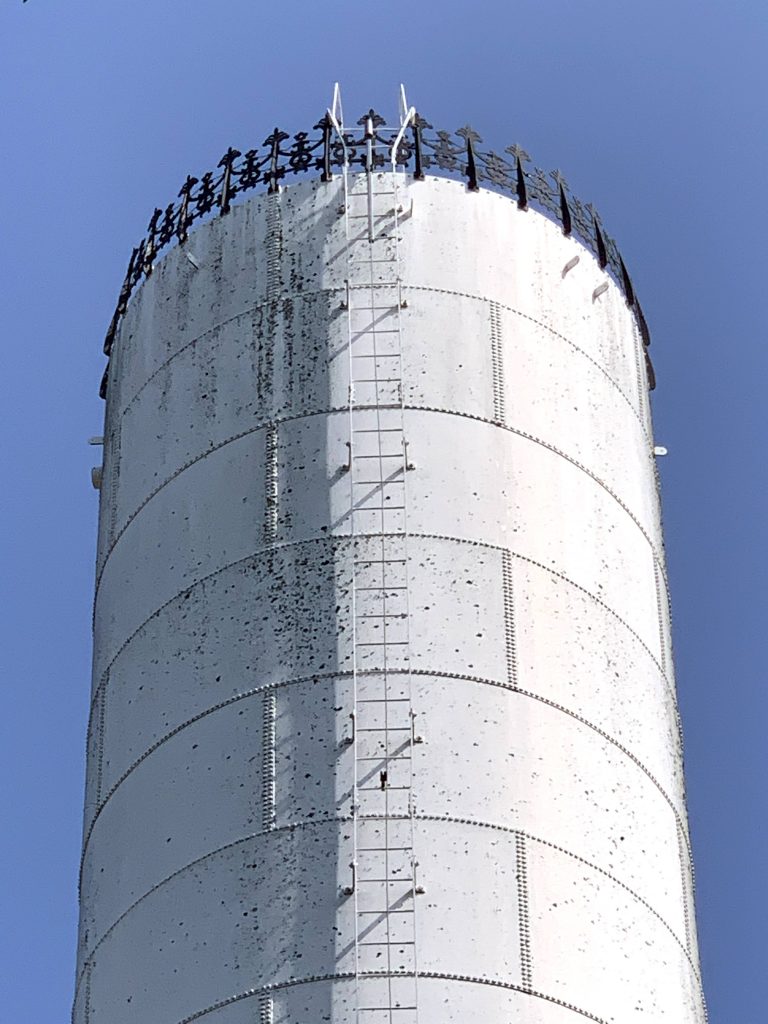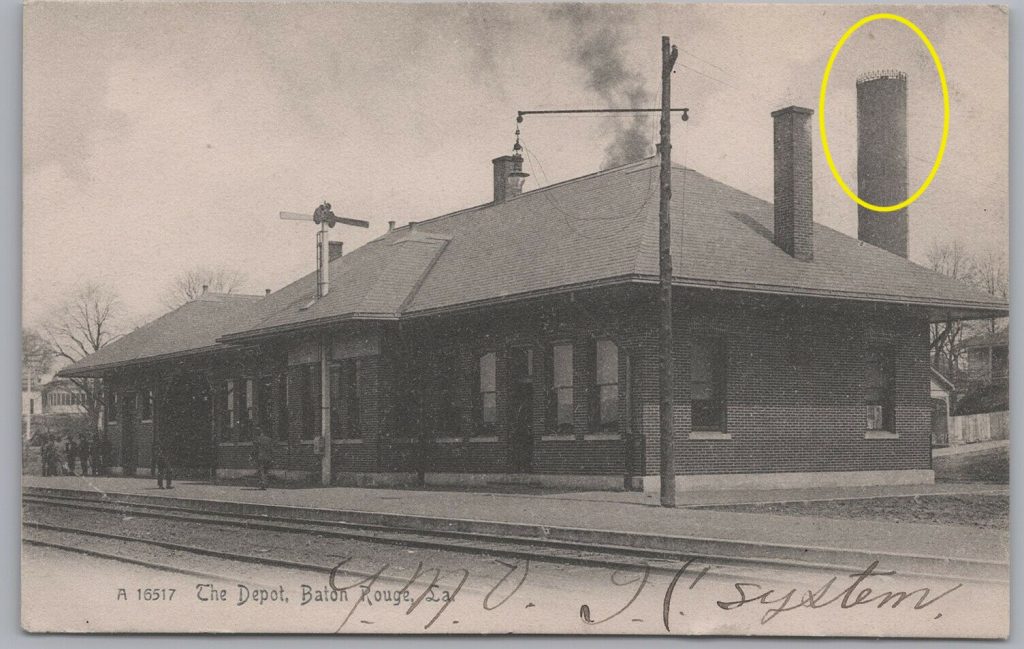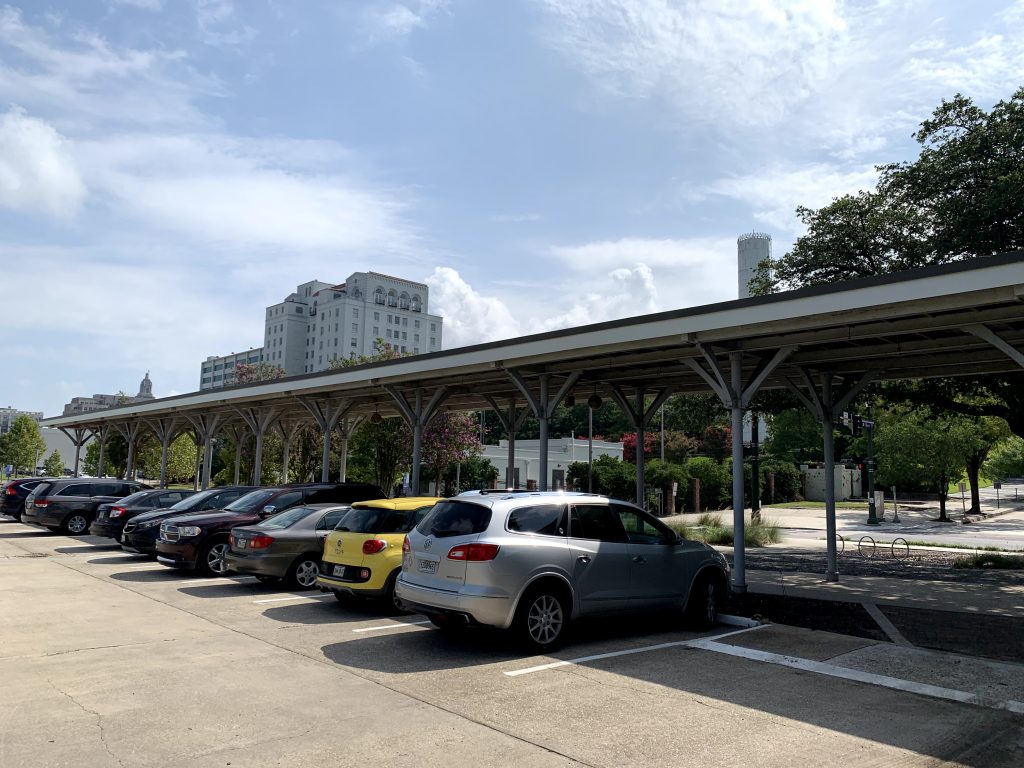This postcard caught my attention today, and I decided to do some research to learn more about it.

The caption on the postcard reads “The Depot, Baton Rouge, La,” and there’s a handwritten note that reads “Y. M. V. R system.” Old photographs like this fascinate me, and I decided to see if I could find out where it was located.
The back of the postcard indicated that it was printed by The Rotograph Co. in New York City, and this site indicates that this company was in business from 1904 to 1911. This is useful information, since Baton Rouge’s city directories start in 1905. A quick flip through the 1908 city directory turned up this hit:

Looks a lot like the handwritten caption, doesn’t it? I think we’re onto something.
At first glance, the foot of North Boulevard didn’t turn up much. Flanked by Louisiana’s Old State Capitol to the southeast and the Louisiana Art & Science Museum to the south, the only thing I noticed was that the “foot” of North Boulevard is now a small parking lot for the Museum. If this was even the correct spot.
As I was driving around the area, though, I noticed something else. Does this look familiar?

This site goes into good detail about this historical curiosity, which is located a short walk from the foot of North Boulevard. And if you’re wondering why this is relevant, look carefully at this spot in the postcard:

Yes! The Standpipe is visible in this shot, cleverly disguised as some sort of smoke stack. If it weren’t for the ornate trim at the top of it (which is blessedly still there), I would have been left guessing about where this postcard photo was taken.
Standing in the spot where this building may have been, it seems clear now that this is the right spot:

But it gets even better. I walked around the area to investigate, and I stumbled across this:

And it dawned on me: the Louisiana Art & Science Museum is the old Yazoo & Mississippi Valley Railroad building!
According to the National Register of Historic Places, the building that the museum is in was built in 1925. This makes sense, since the current building is much larger than what is depicted in the postcard. It seems logical to conclude that the depot in the postcard was demolished to make way for the larger building.
Period newspapers confirm this. From the State Times Advocate on January 12, 1925:
The new depot of the Yazoo and Mississippi Valley system, now nearing completion here. The depot, the end wings of which are not shown in the picture, is being built at a cost of $325,000, and a part of the $1,300,000 improvement program of the railroad. It is one of the finest depots on the Illinois Central System, and the finest south of Memphis.
A celebration is being planned by the Chamber of Commerce in connection with the completion of the new depot. The Chamber of Commerce plans to have a party of high officials of the Illinois Central system, including President C. H. Markham, at a dinner at which the services of the railroad to Baton Rouge will be recognized.
On the committee to arrange for the celebration are: J. A. Bechtold, H. L. Cohn, Mayor Wade H. Bynum, Chas. P. Manship, A. F. Cazedessus, Alex Grouchy, Jr., Clive W. Kernan, Frank H. Kean, Hermann Moyse, Solon Farrnbacher, W. P. Connell, Joe Gottlieb, A. Doherty, John T. Laycock, Ben B. Taylor and Dalton Reymond.
Those are some familiar names to longtime Baton Rouge residents, suggesting that this was indeed an important event. With the city’s oil refinery operations rapidly expanding, it’s no wonder that the railroads were investing heavily in the Red Stick.
One reply on “A Railroad Depot, Hiding in Plain Sight”
Everything has been fabricated about our history. I have been researching Baton Rouge for few years. From what I found 1925 – 1930 was when they got to “Baton Rouge ” and started writing the narrative. I think Huey P. Long was the go to answer for anyone questioning or the indoctrination didn’t stick. LOC has railroad maps from 1820 covering most of Louisiana towns. It’s not just BR It’s every town . 1 thing I’m curious about is there was a large man made pond at ” victory park ” in late 1800z . Who’s victory was it and over who?